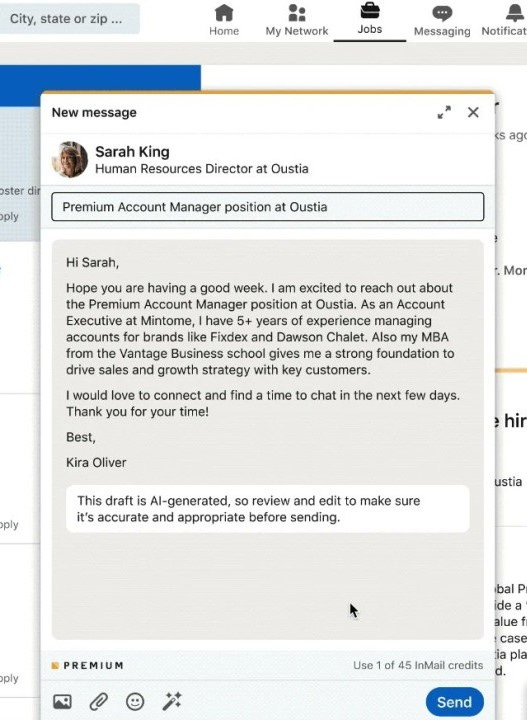LinkedIn’s AI Is Turning Us All Into Marketing Interns
LinkedIn’s AI messages were meant to help us all write better. But they make us sound like a robot. Here's what went wrong and how it could be fixed.
Hey hey,
Starting a professional conversation is hard.
Like when you are trying to message someone you admire, and all you can think of is,
"Hi, big fan of your work. Hope you're doing well."
Or when you want to reconnect with an old colleague, but everything sounds either too formal or too forced, "Hey! Long time no see. Just circling back..."
You don’t want to sound too casual. You don’t want to sound too stiff.
You just want to say the right thing, without overthinking every word.
LinkedIn saw that problem.
So they built an AI to help you write faster, sound smarter, and avoid awkward intros.
But somewhere along the way, the solution became a new problem.
Instead of making messages more human, it made them feel… less real.
What is it? And can you fix it as a PM?
Let’s dig in!
What LinkedIn Shipped?
LinkedIn rolled out AI-powered message suggestions that pop up while you are typing. The goal is to make professional communication easier.
The AI analyzes your conversation context and suggests responses like:
Thank you for sharing this valuable insight!
I'd love to explore potential synergies between our organizations.
This aligns perfectly with our strategic initiatives.
These suggestions appear in bubbles you can tap to auto-complete your thoughts.
Sounds so good and helpful, doesn't it?
But it is not exactly as it seems to be.
1. It's Corporate Mad Libs Gone Wrong
The suggestions sound like they were trained on a 200-slide investor deck from 2011. It’s less human conversation, more middle manager trying to impress their boss.
2. Kills the Vibe Before It Starts
You are trying to ask someone for a coffee chat. LinkedIn shows, “Let’s ideate on this offline.” Bruh. Nobody talks like that. It’s networking theater, not a real connection.
3. Uncanny Valley Vibes
The AI almost nails it. But instead of “Thanks for the connect,” it gives, “I appreciate this opportunity for meaningful professional engagement.”
Close, but off like a human-shaped chatbot that just got promoted.
But if there is something they got right, it has to be:
Understanding the Blank Page Problem
LinkedIn got one thing right - people struggle with professional messaging.
Staring at a blank message box, wondering, "how do I ask for a coffee chat without sounding desperate?". LinkedIn’s trying to help. That matters.
What Would You Do As a PM?
Now, think from a product manager's shoes.
If you were the LinkedIn PM, how would you make this feature useful?
Tone slider:
Let users choose between “Casual DM” and “Boardroom Vibes.”
Audience-aware suggestions:
Talking to a peer ≠ talking to a VP. AI should know the difference.
Train on real messages:
Stop using cringeworthy posts. Train on actual DMs that led to real outcomes.
Build confidence, not dependency:
Help users write better, not just pick templates forever.
The issue isn't that people don't know how to write professional messages.
It's that LinkedIn has created this weird alternate reality where everyone thinks they need to sound like a corporate press release.
Instead of teaching people to write more authentically, LinkedIn's AI is doubling down on the fake corporate speak that makes the platform feel so soulless.
The best networking happens when you sound like a real human being, not a marketing automation tool.
That’s it for today.
Until next time,
—Sid





